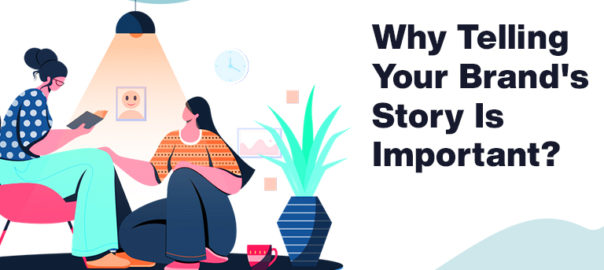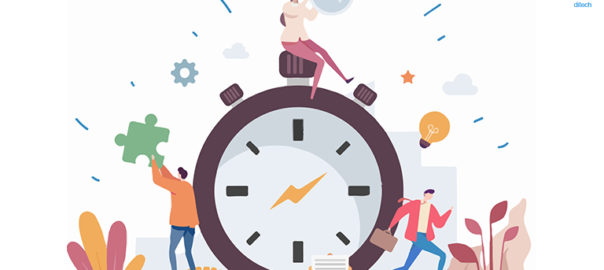In today’s crowded digital marketplace, the competition is fierce. Every brand is out there fighting for the attention of its consumers. Consumers only have limited attention and time to give as they are busy with their own life. This is where a brand storytelling comes in. It gives you the means to make an emotional connection with your customers.
Telling a good brand story is a difficult job. This is why digital branding agency and their digital branding services are in so much demand. If you want to know about the nuances of brand storytelling, you’re at the right palace. Read on, and find out why it is a must for your brand.
What Is a Brand Story?
A brand story is a narrative of your brand that tries to strike an emotional chord with your customer. It is different from traditional advertising which is telling your customers what you do. The objective of a brand story is to inspire an emotional reaction. The end result of this emotional reaction is to be memorable to your customers.
Brand stories or branding of your company is done through all the content it releases be it blog posts, videos, or social media campaigns. Even something as small as your logo can be a reflection of your brand story.
Why Brand Storytelling is Important?
Your ideal customer is being bombarded with advertisements, campaigns, and whatnot to catch their attention. But their capacity to remember a brand is limited. Good digital branding helps your brand to stand out from the competition. It tells the customers why the business exists, what sets them apart and why they (the customer) must choose your brand over others.
This separates your brand from being just another brand running ads to one that is trusted by the customers. This in turn helps your audience turn into loyal and paying customers. Articulating your core values into a cohesive story also helps you attract the right kind of talent. Future employees who find your values align with that of yours.
How To Get Your Brand Story Right?
To get your branding right, a digital branding agency has to know the answer to some very fundamental questions regarding your business. This will help them to provide you with the best digital services in line with your goals.
Find your ‘why’?
Knowing your why is at the core of getting your digital branding right. You have to know why you do what you do, and what makes you get up from bed in the morning. Once you are aware of it only then can you get your branding right. Because as the American author and inspirational speaker, Simon Sinek says in his book Start With Why, “It’s worth repeating: people don’t buy WHAT you do, they buy WHY you do it.”
Talk to your ideal customer
A brand story is a story, and like all good stories, it needs a hero. Your ideal customer is the protagonist of your brand story. All the content you put out is directed to them. This is why it is important to find your ideal customer and put your message across as if you are talking to them. To take this even further, make sure you only have one person in mind. You know their age, demographic, background, education, hobby and aspirations.
Be authentic
Being authentic is another great way to nail your branding. Your customers can tell when you are being a copycat and trying to imitate a successful competitor. Being authentic is all about being true to your core values and sharing those values across platforms.
Be consistent across platforms
The messaging across platforms is different, a video is a visual medium while a blog post is a text-based one. To make your brand story effective and memorable your message across various platforms has to be the same. Whether it’s your videos, website, blogs or even logos, there should be consistency in your digital branding.
Keep it simple
The objective of your brand story is to resonate with your customers and evoke a favorable emotion, not to win awards. This is why you need to keep it simple and not overcomplicate it. Unless that’s what your ideal customers would prefer- sophisticated and complex.
Examples of Good Brand Storytelling
Spotify Wrapped
Spotify wrapped by Spotify is an annual campaign that informs you about your listening in the year gone by. You get to see what were your favorite songs, artists, and playlists. It also recommends songs and artists you might like based on your listening habits. The audio streaming combines data and personalization to deliver ‘sound’ brand storytelling. What’s more? The annual event can be replicated every year while adding new features to it.
Nike
The Just Do It slogan by Nike has to be one of the most memorable and effective brand storytelling in recent times. Across its various campaigns and advertisements, the footwear and apparel brand asks its consumers to Just Do It. The messaging remains consistent across platforms and does help in evoking a positive emotion in consumers’ minds.
Old Spice
The Smell like a Man campaign by Old Spice made the brand a household name. It is a witty take on how your man should smell like. The brand shows the traits of a perfect man, the one you become when you use Old Spice deodorants. The campaign became extremely successful and the brand now tries to outdo itself with each new campaign.
Wrap-up
A Brand story is an excellent way to make an impression on your customers and evoke an emotional response. When done right, it helps you stand apart from your competitors and provides you with an edge even in a market with cutthroat competition. The key is to know the basic values of your business inside out and keep the message consistent across platforms. If the whole brand storytelling seems a bit overwhelming to you, you can get help from a digital branding agency. Contact Us to know more.
Read more about storytelling through design here.



